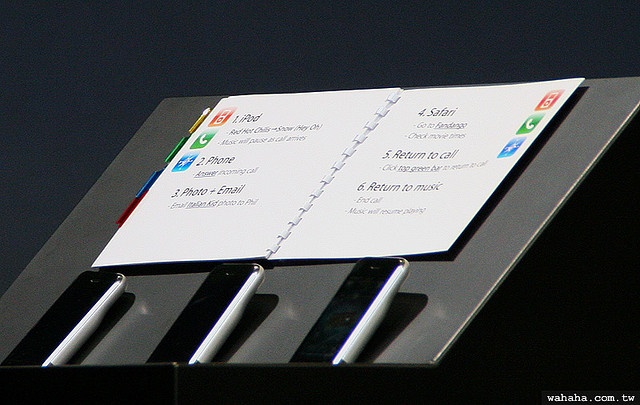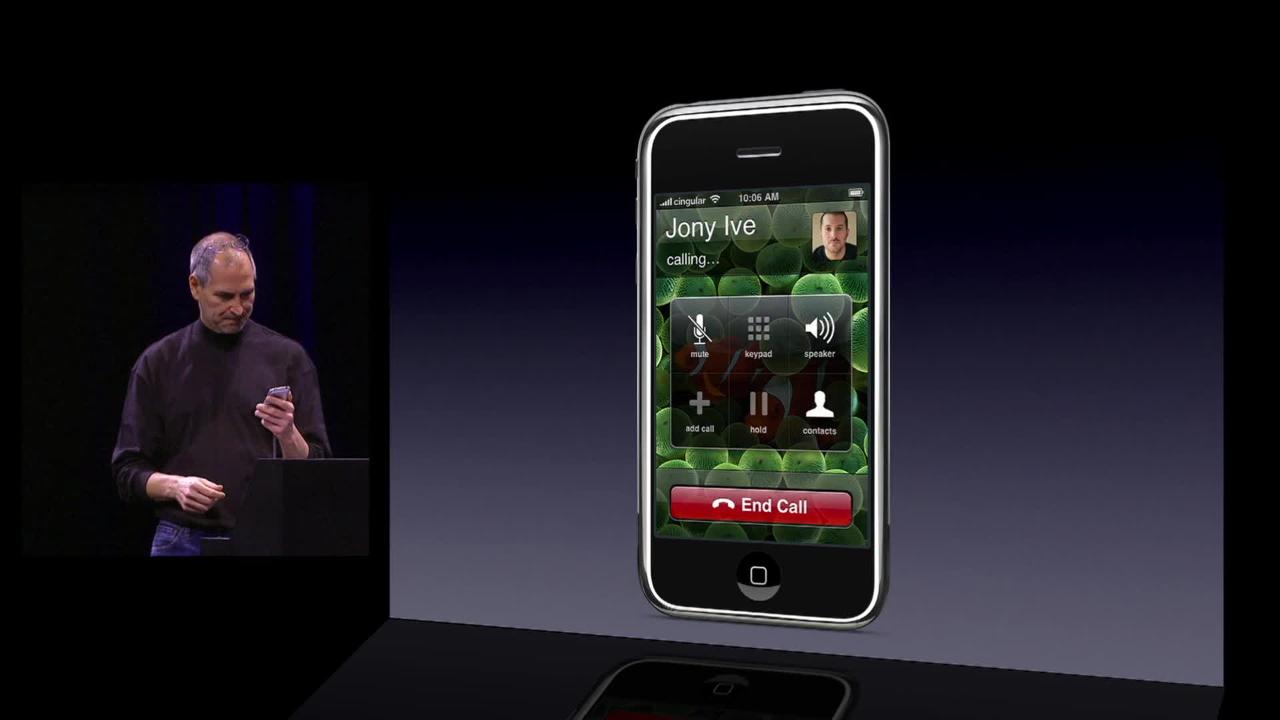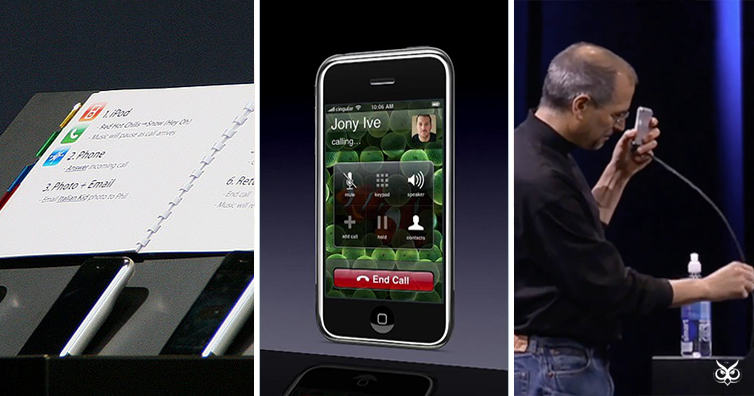I still remember the first time i watched that keynote. On January 9, 2007, Steve Jobs revealed three pioneer products: “a widescreen iPod with touch controls, a revolutionary mobile phone and a breakthrough, internet communication device.”
But, these were not three separate devices, it was one device. It’s name: iPhone.
No matter if you are an Apple fan or an Android fan, one thing’s for sure: Apple reinvented the phone that day and changed our world. (the article continues after the ad)
But even though that keynote seems flawless, some Apple employees were sweating bullets backstage. And this is because, Steve Jobs insisted on live demo despite being warned that the iPhone was buggy as hell at the time. In a very, very interesting article published in the New York Times, former key iPhone developers Scott Forstall, Andy Grignon and Tony Fadell share some behind-the-scenes details from that day:
3. The “golden path”

According to Andy Grignon, the manager in charge of iPhone’s radio, the night before the keynote was terrifying. Jobs insisted on a live demo presentation of the prototype, which was still in the initial development stage, often freezing, losing its internet connection, dropping calls or simply shutting down:
The iPhone could play a section of a song or a video, but it couldn’t play an entire clip reliably without crashing. It worked fine if you sent an e-mail and then surfed the Web. If you did those things in reverse, however, it might not. Hours of trial and error had helped the iPhone team develop what engineers called “the golden path,” a specific set of tasks, performed in a specific way and order, that made the phone look as if it worked.
2. The fake five-bar signal

Because of the phone’s tendency for crashing, the iPhones used for the live presentation were programmed to always display a full five-bar connection:
Then, with Jobs’s approval, they preprogrammed the phone’s display to always show five bars of signal strength regardless of its true strength. The chances of the radio’s crashing during the few minutes that Jobs would use it to make a call were small, but the chances of its crashing at some point during the 90-minute presentation were high. “If the radio crashed and restarted, as we suspected it might, we didn’t want people in the audience to see that,” Grignon says. “So we just hard-coded it to always show five bars.”
1. The multiple iPhones solution

Even with all the preparations and 100 or so rehearsals, Jobs always encountered a glitch when “playing” with the device. How did they fix that? With more iPhones:
None of these kludges fixed the iPhone’s biggest problem: it often ran out of memory and had to be restarted if made to do more than a handful of tasks at a time. Jobs had a number of demo units onstage with him to manage this problem. If memory ran low on one, he would switch to another while the first was restarted. But given how many demos Jobs planned, Grignon worried that there were far too many potential points of failure.
Remember the legendary iPhone keynote in the video below (the first three minutes are a must-see):
If you like what you read, then you will definitely love this one: Apple Logo Designer Reveals Why The Logo Has A Bite
Photo: wahaha.com.tw, Screenshot from YouTube
Photoshop: I’m A Useless Info Junkie
Sources: And Then Steve Said, ‘Let There Be an iPhone’ | Former Apple Engineer Gives Behind-the-Scenes Look at the Original iPhone Introduction | The iPhone’s First Demo Was Buggy as Hell



